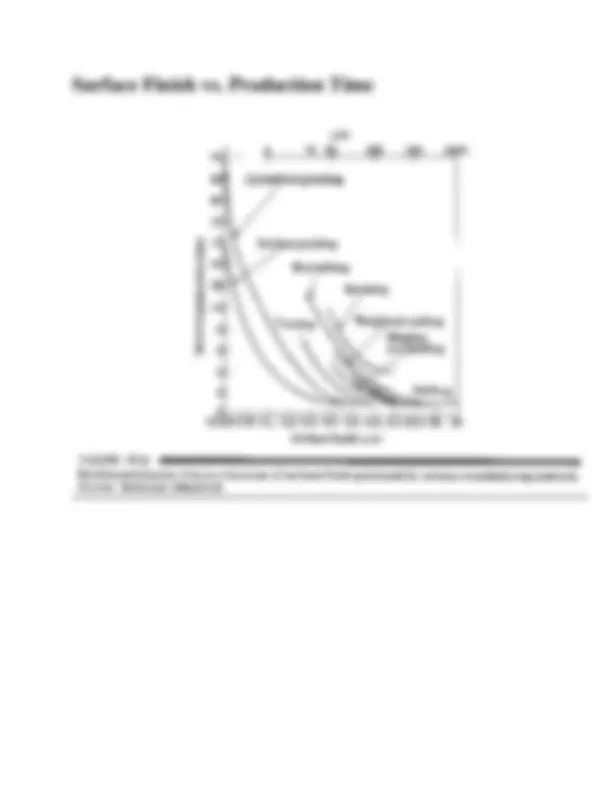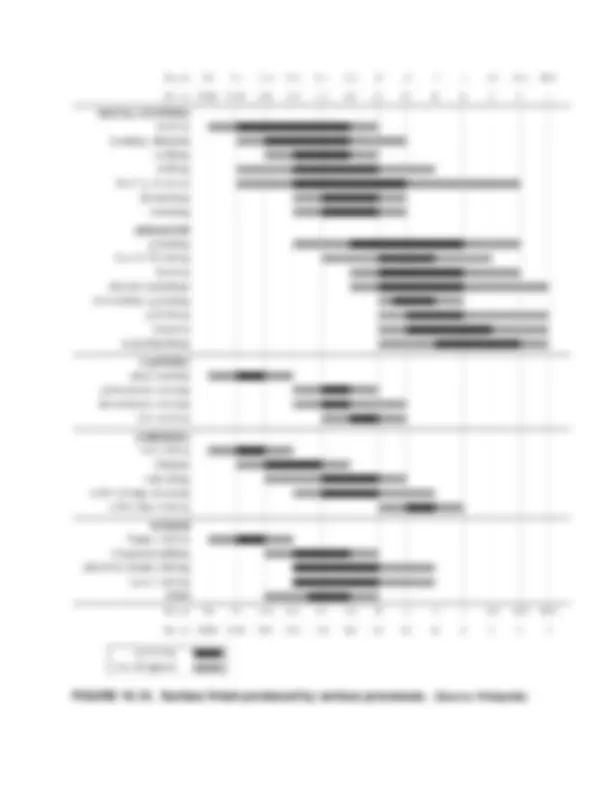





Study with the several resources on Docsity

Earn points by helping other students or get them with a premium plan


Prepare for your exams
Study with the several resources on Docsity

Earn points to download
Earn points by helping other students or get them with a premium plan
Community
Ask the community for help and clear up your study doubts
Discover the best universities in your country according to Docsity users
Free resources
Download our free guides on studying techniques, anxiety management strategies, and thesis advice from Docsity tutors
In the past, one of the traditional weaknesses with graduating mechanical design engineers is their inability to select tolerances. Most students were.
Typology: Exams
1 / 7

This page cannot be seen from the preview
Don't miss anything!




EML 2322L – MAE Design and Manufacturing Laboratory
FIGURE 15.10. Surface finish produced by various processes. (Source: Wikipedia)
Figure 15.8 shows relative production time as a function of surface finish for common manufacturing processes. Although the curve for each process is slightly different, the general trend shows that the relative production time increases exponentially as a function of achieved surface finish. In other words, doubling the surface finish requirements translates to more than twice the part cost. Therefore we should always be able to justify the surface finish requirement we list on each surface of the parts we design. Saving ten minutes of machining time on one part surface might not seem like a worthwhile achievement, but remember that pennies make dollars, and the savings can be substantial for a properly designed part. Worded differently, failure to specify the roughest surface finishes permissible on each surface can easily increase part cost by an order of magnitude!
Figure 15.10 presents a collection of the most common manufacturing processes and the surface finishes commonly associated with each of them. As explained in the legend, the shaded portions of the bars represent the average application of these processes and means almost any shop should be able to achieve these finishes. The remaining portion of the bar indicates the less frequent application, which means one of two things: (1) highly skilled operators and equipment in excellent condition are required to obtain the surface finishes on the higher precision end of the range or (2) the process can easily achieve the finishes on the lower precision end of the range, but a cheaper alternative likely exists, which could significantly reduce part cost.